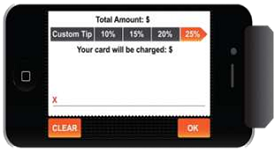
- Mobile Learning Essentials - Home
- Introduction
- Mobile Learning Essentials - Myths
- Enhancing Mobile Learning
- Case Study1
- Reflection and Research
- Cost vs Benefit Ratio
- Communication Mobile Learning
- PersonaliZing M-Learning Platforms
- Expectations of Mobile Learners
- Cultural Factors
- Frameworks
- Role of Context
- Facilitating Mobile Learning
- Case Study2
- Adopting Mobile Learning
Mobile Learning Essentials - Myths
As with any new technology, there was initially a lot of skepticism regarding M-learning. Some said that it is not a perfect platform, others said that it will encourage distractions, some even suggested that it will reduce attention span and promote intrusive behavior.
While some of these concerns might be justified, under specific circumstances, most of the others are not so well-rooted. Let us discuss some of the most common myths surrounding m-learning, and also debunk them −
Myth 1: Mobile devices dont have big enough screens

It is true that mobile platforms wont offer the kind of large screens that desktop computers or laptops offer. However, the more important question here is do we use the entire laptop screen to read a document?
E-book readers have done a marvelous job at debunking the myth that text cannot be read off a mobile screen. In other words, the screens used in mobile learning may not be large, but they are large enough for comfortable viewing and reading.
In fact, their smallness is actually a boon, because it allows the learner to access information without additional use of hardware like a mouse and a keyboard or a headphone and webcam for that matter. All it takes is the tip of the finger.
Myth 2: Mobile Learning doesnt have a consistent standard of evaluation
Sharable Content Object Reference Model (SCORM) had tried to set a standard for the e-learning products, however with the development and rapid implementation of frameworks like HTML5, CSS3, along with the initializing of many app stores like iOS, Android, BlackBerry. It has become very easy for existing content to become more mobile-friendly.
Technology is working fast towards introducing a standard procedure that can seamlessly connect different mobiles with one another for the sake of interaction and data usage.
Myth 3: Mobile devices offer plenty of distraction
When teaching using slideshows and projectors was started, then general opinion of the public was similar it will distract readers from education towards the gimmicks.
Although, that boat has sailed and no one has had any major attention-deficit disorders because of it.
If anything, education was improved, as the teachers could encapsulate the entire idea into short phrases and spend more time interacting with the student. Anyways, the turn all notifications off feature will come real handy.
Myth 4: Mobile learning is just portability-enhanced learning

Mobile learning may be offering greater mobility, but thats not the only application for it. It gives a flexibility of environment and an on-the-spot resolution to issues.
For example, a person who doesnt feel comfortable sitting in an upright posture, might find a more relaxed way of reading.
Not only that, a person maybe waiting in a queue for something and then realizes that a similar offer has come up in someplace else. He can now switch venues and get a better offer and can save time as well.
Myth 5: Mobile Learning is not suitable for children with disabilities

Hitting this myth right on its head, M-learning companies have pointed out that many online app stores like Google Play and iOS store conduct extensive accessibility tests on apps before approving their availability, just so that all their customers get the best possible experience and accessibility with their products.
Contrary to the allegations of non-accessibility, all these products actually offer many personalization features which helps the users to maximize usability of the product.
This flexibility makes mobile learning a boon for learners with disabilities.
Myth 6: Mobile learning delivers only small snippets of information

In todays world, where learners are leaning towards getting information through personal experience, as compared to reading books full of theory on the subject, it is small snippets of information that offers better resolution.
For example, while knowing about a city earlier needed the engagement of a fully-trained guide, now M-learning has made it possible for even someone who doesnt know the entire city, except for a neighborhood, to share information on it.
Earlier, the best restaurant in the area was the one that the guide marched you into. Now, you can get reviews of restaurants in just a particular area from people who might not have ever opened a history book on that place. This sharing of information in snippets actually encourages participation of the people and helps gaining knowledge from all different possible sources. However, that doesnt mean that M-learning cannot provide holistic education.
Audio and video features are frequently used in platforms like MOOCS to take an M-learner virtually inside the classroom where the teaching is going on. Learners can get the closest it comes to a real in-classroom experience with the help of virtual learning tools.
Myth 7: Mobile Learning is already being implemented by mobile-phone users

As per recent reports, most of the mobile-device users predominantly use it for the sake of social networking and interconnectivity only. They are yet to implement M-learning on their mobile platforms.
Part of these issues stem from the instructors themselves not being adaptive to M-learning technology. They arent keen on learning a new skill, especially if it is a skill that takes away the focus from the single instructor model that they are used to.
Myth 8: Mobile learning is unreliable as devices can be lost, damaged or stolen

Mobile devices that can impart a good quality Mlearning experience are generally expensive. This undoubtedly makes them a prime target for thieves. Because they are sensitive devices, they may also be prone to damage upon rough handling.
But, as per the reports submitted by the Mole NET program- out of 10,000 handheld devices that they had engaged in various projects, less than two percent were damaged, lost or stolen.
This means that these unfavorable situations can be largely thwarted if the learner is cautious.
Myth 9: Mobile devices are less secure than desktop computers
Mobile devices might be more prone to theft, because of their smaller size, but they have better data storage facilities and better security.
Most phones have a PIN-enabled access to the phone. Many of them have started incorporating finger-scanner features, which means the data cant be accessed by anyone else.
In addition to this, there are software like Prey, that can track mobile devices in case they are lost or stolen.
Myth 10: Mobile learning is expensive
While the initial expenses of purchasing a decent phone might be high, the subsequent investment of time, efforts and money on maintenance and usage of mobile phones is way lesser as compared to desktops.
Also, mobile phones now cost a fraction of what they used to come for earlier.
Some universities even have provisions for smartphones to be made available free under contractual usage agreements, where a learner pays for the services and usage of the smartphone, without paying for the smartphone itself.